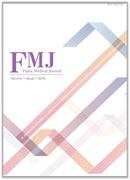7 巻, 1 号
選択された号の論文の6件中1~6を表示しています
- |<
- <
- 1
- >
- >|
Original Article
-
原稿種別: Original Article
2021 年 7 巻 1 号 p. 1-7
発行日: 2021年
公開日: 2021/02/01
[早期公開] 公開日: 2020/07/14PDF形式でダウンロード (454K) HTML形式で全画面表示 -
原稿種別: Original Article
2021 年 7 巻 1 号 p. 8-11
発行日: 2021年
公開日: 2021/02/01
[早期公開] 公開日: 2020/07/14PDF形式でダウンロード (136K) HTML形式で全画面表示 -
原稿種別: Original Article
2021 年 7 巻 1 号 p. 12-17
発行日: 2021年
公開日: 2021/02/01
[早期公開] 公開日: 2020/07/14PDF形式でダウンロード (496K) HTML形式で全画面表示 -
原稿種別: Original Article
2021 年 7 巻 1 号 p. 18-22
発行日: 2021年
公開日: 2021/02/01
[早期公開] 公開日: 2020/07/14PDF形式でダウンロード (174K) HTML形式で全画面表示 -
原稿種別: Original Article
2021 年 7 巻 1 号 p. 23-28
発行日: 2021年
公開日: 2021/02/01
[早期公開] 公開日: 2020/07/14PDF形式でダウンロード (328K) HTML形式で全画面表示
Case Report
-
原稿種別: Case report
2021 年 7 巻 1 号 p. 29-34
発行日: 2021年
公開日: 2021/02/01
[早期公開] 公開日: 2020/07/14PDF形式でダウンロード (534K) HTML形式で全画面表示
- |<
- <
- 1
- >
- >|
